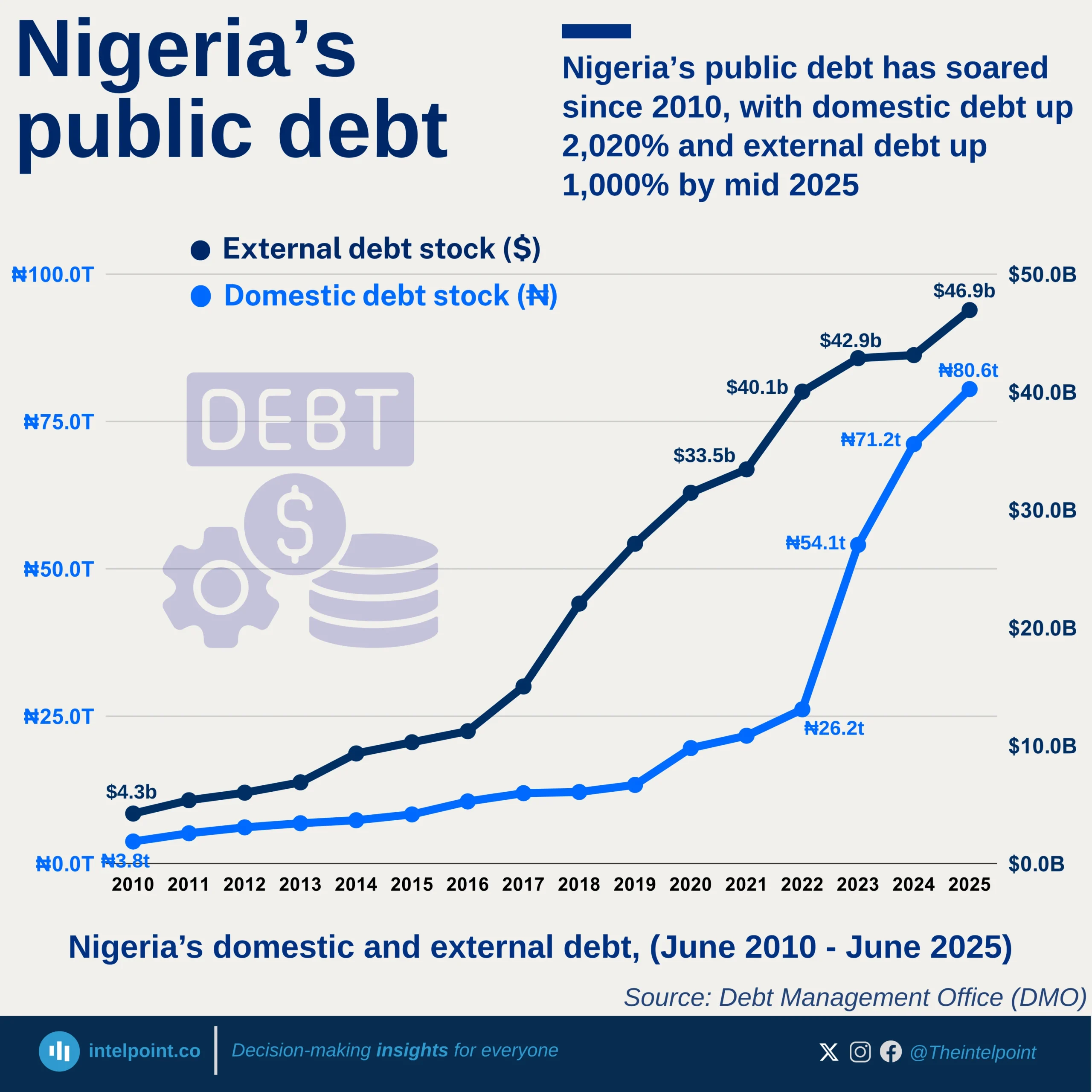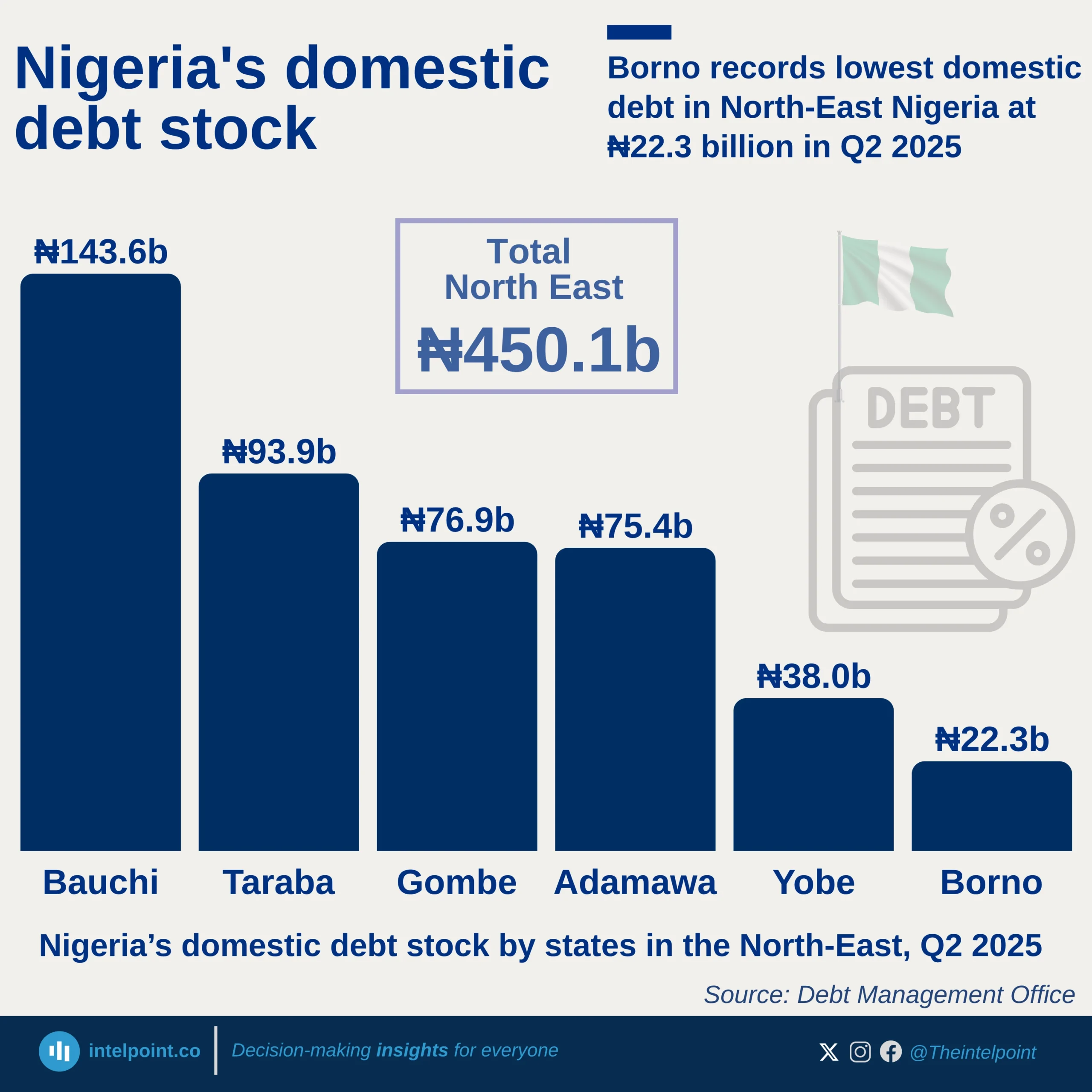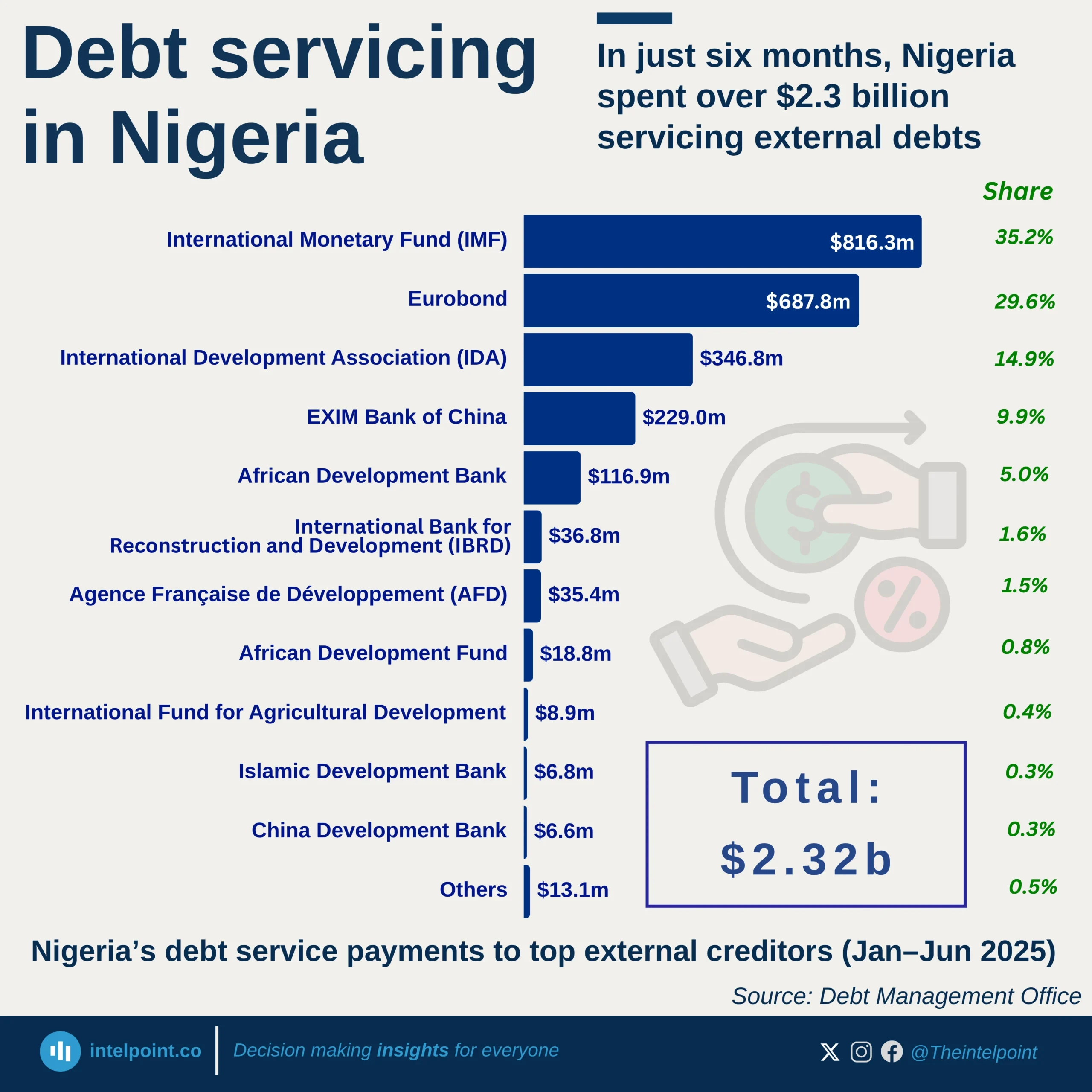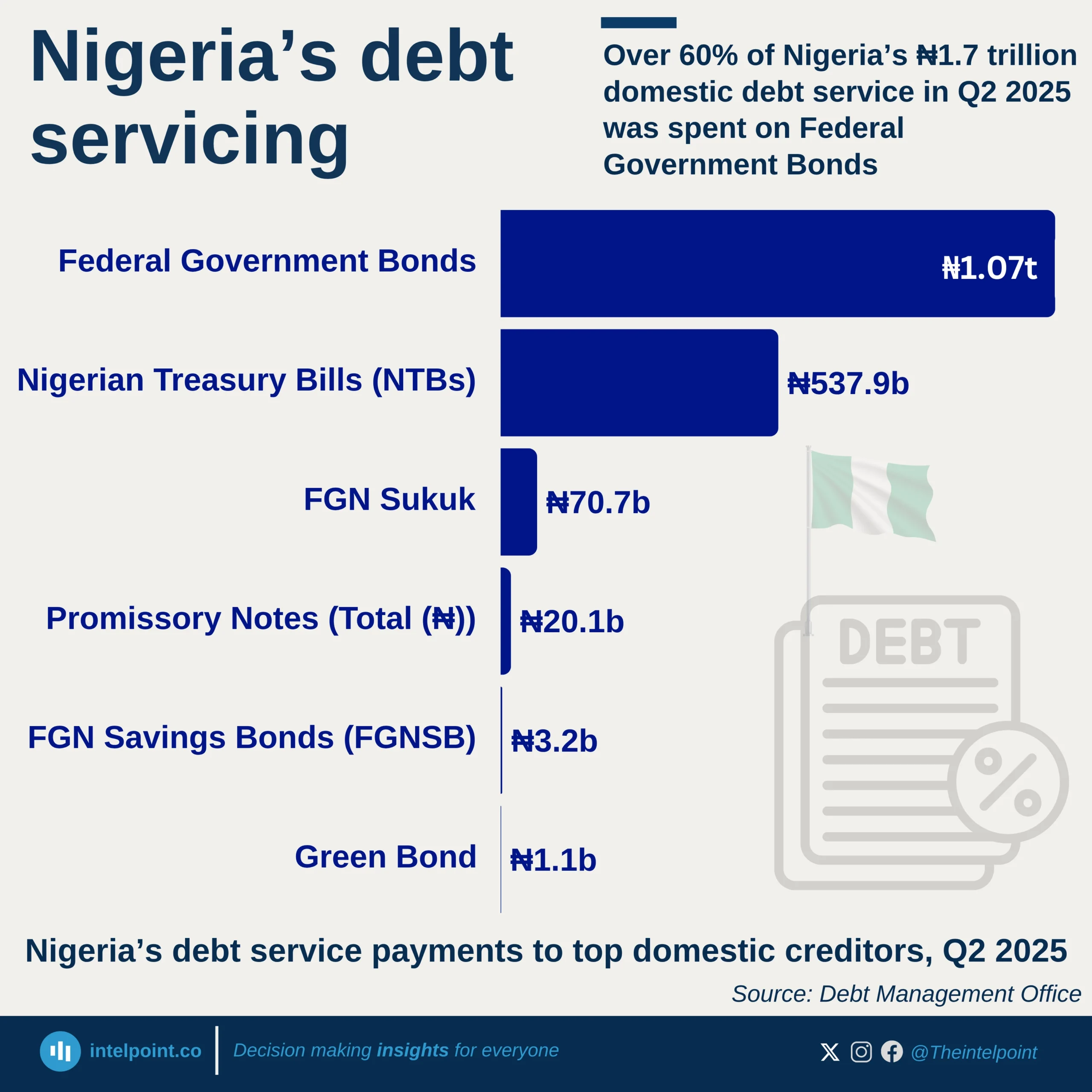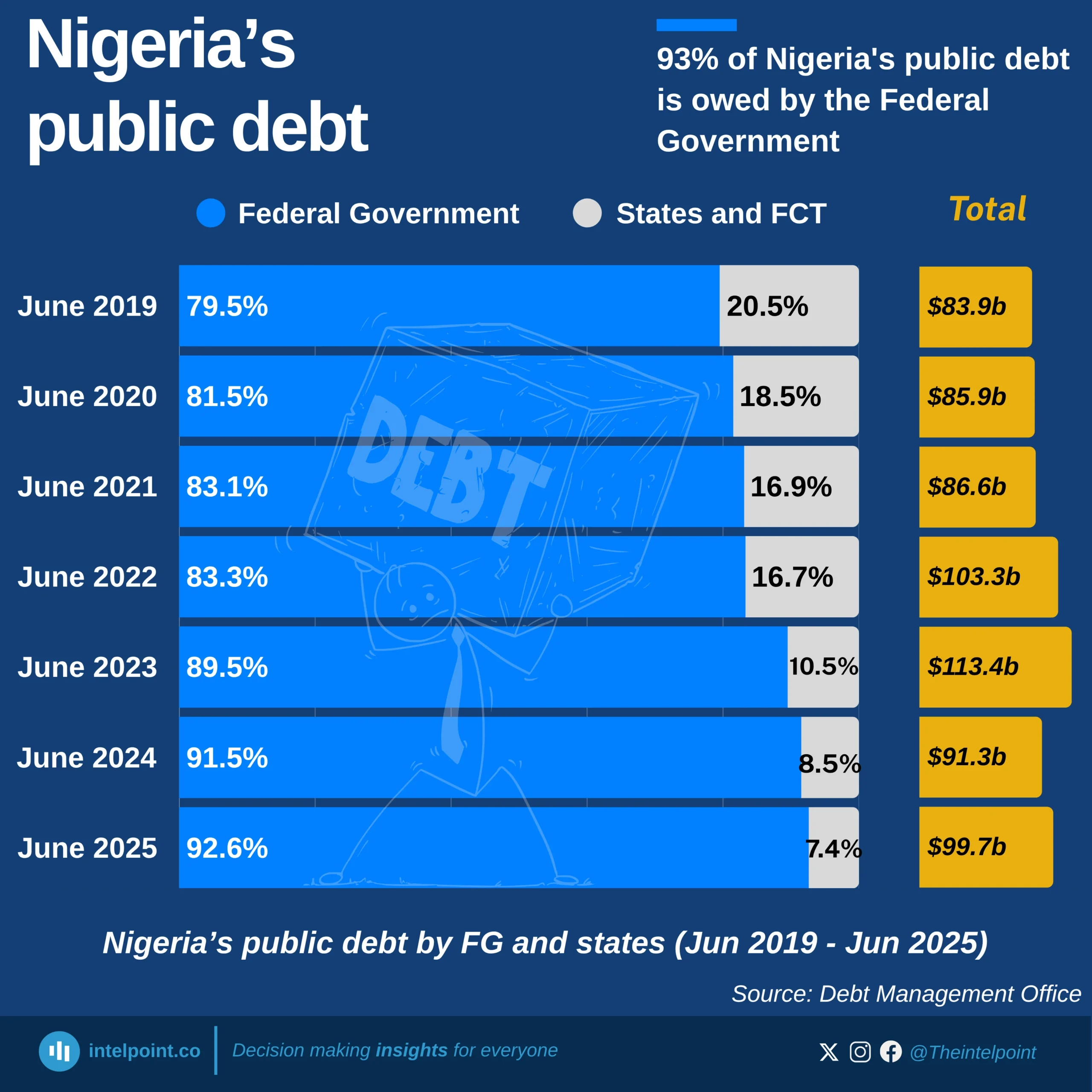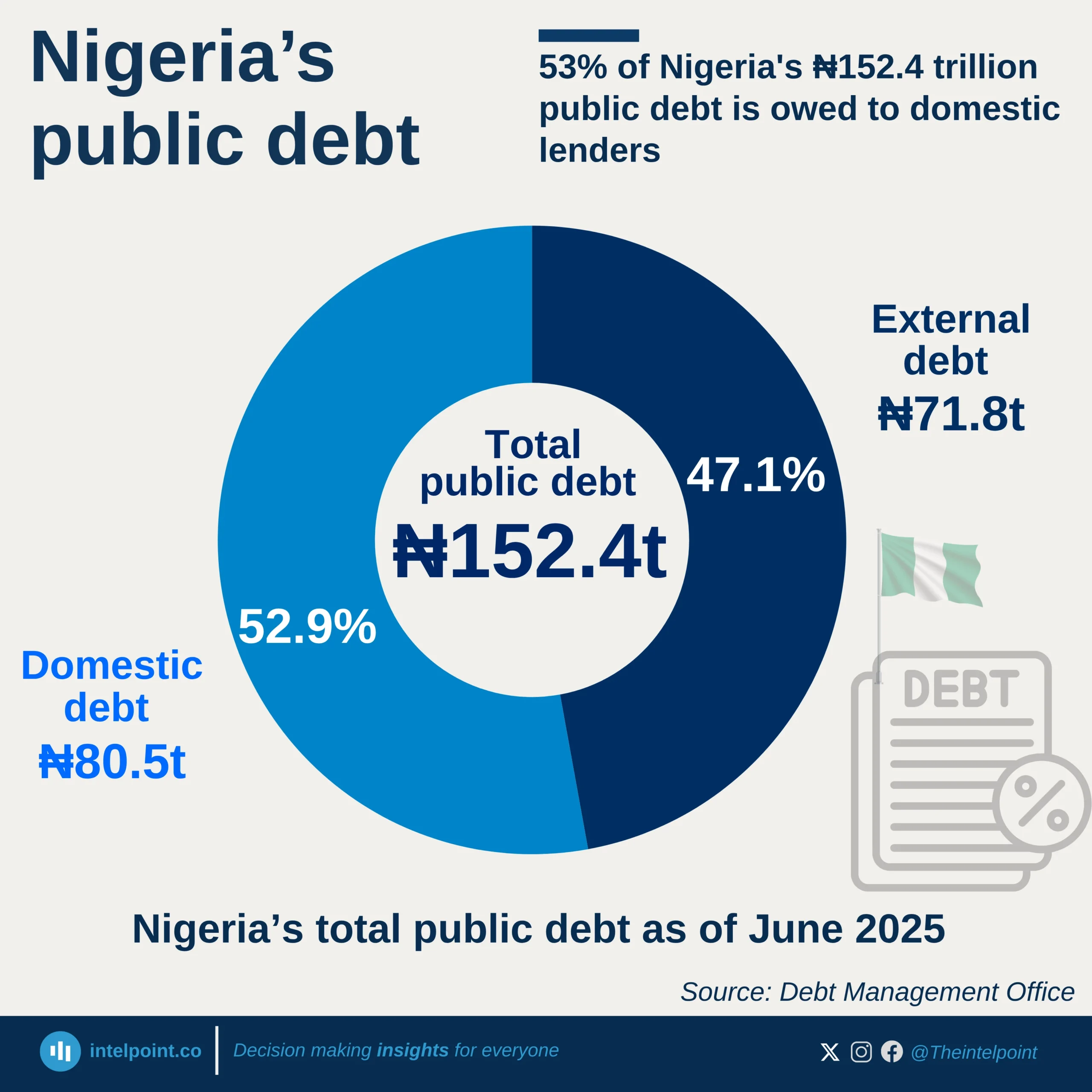Between 2000 and 2023, Nigeria received significant loans from China, with transportation taking the lion’s share at $6.2 billion dollars—65% of total funding. Information & Communication Technology followed with $1.4 billion dollars, while energy projects attracted $1.2 billion dollars.
Water supply and industry/trade services received comparatively lower amounts at $381.1 million dollars and $368.2 million dollars, respectively. These figures highlight China’s strategic focus on Nigeria’s infrastructure, particularly in transportation and energy sectors.
